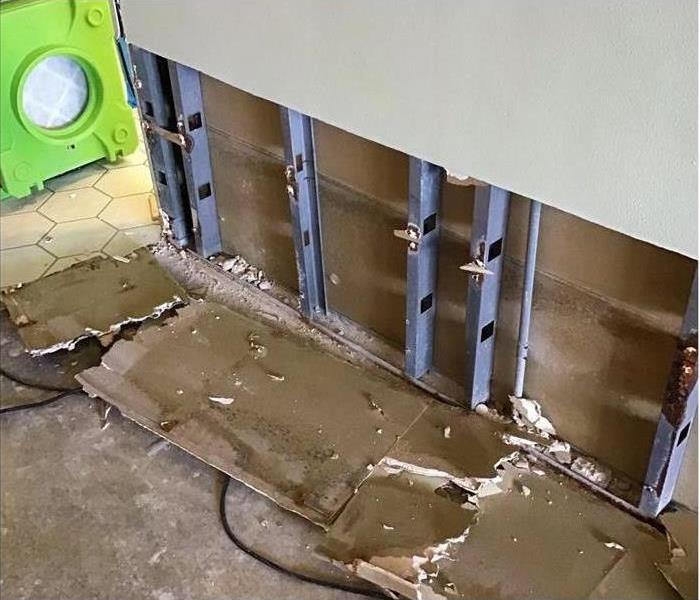5 Questions and Answers About Flooded Drywall
6/29/2022 (Permalink)
 When drywall, or plasterboard, gets very wet, or when it is wet for a long time, it loses structural integrity.
When drywall, or plasterboard, gets very wet, or when it is wet for a long time, it loses structural integrity.
Flooded Drywall Questions and Answers
After flooding has receded, you may need to complete some reconstruction in your home. Take a look at some common questions about removing drywall.
1. What Is a Flood Cut?
When your home has been damaged by flood waters, the water restoration professionals in Lighthouse Point, FL, will cut out the wall at least 12 inches above where flood damage stopped. This is called a flood cut.
2. What Happens When Drywall Gets Wet?
When drywall, or plasterboard, gets very wet, or when it is wet for a long time, it loses structural integrity. When this happens, the wall becomes soft and weak. Additionally, the area could see mold growth and become discolored or smelly.
3. Is It Necessary To Tear Out Wet Wallboard?
A speedy response may save the wall. However, if the drywall has obviously absorbed moisture, or if it is soft, stained, obviously wet, or smelly, it must be removed and replaced. This job can expose you to hazards. Instead of taking personal risks, contact a local water damage specialist.
4. What Are the Main Concerns With Flooded Walls?
Flooding carries a high risk of contamination. Flood waters may carry infectious diseases, chemicals, and other pollutants. These can lead to problems for your family if those contaminants are allowed to remain in your home after soaking into the plasterboard.
5. Should Drywall Be Recycled or Destroyed?
Some plasterboard can be recycled if it consists of gypsum powder and paper (as well as some additives). Unfortunately, most of the drywall pulled out ends up in landfills. Some water restoration professionals will haul the materials off for you. If not, reach out to an appropriate source for recycling.
Flooding leads to many concerns, but contaminated drywall shouldn't be a serious problem. Don't wait for further trouble before you take action. Instead, contact water reconstruction professionals in Lighthouse Point, FL, to put your home back in shape.



 24/7 Emergency Service
24/7 Emergency Service